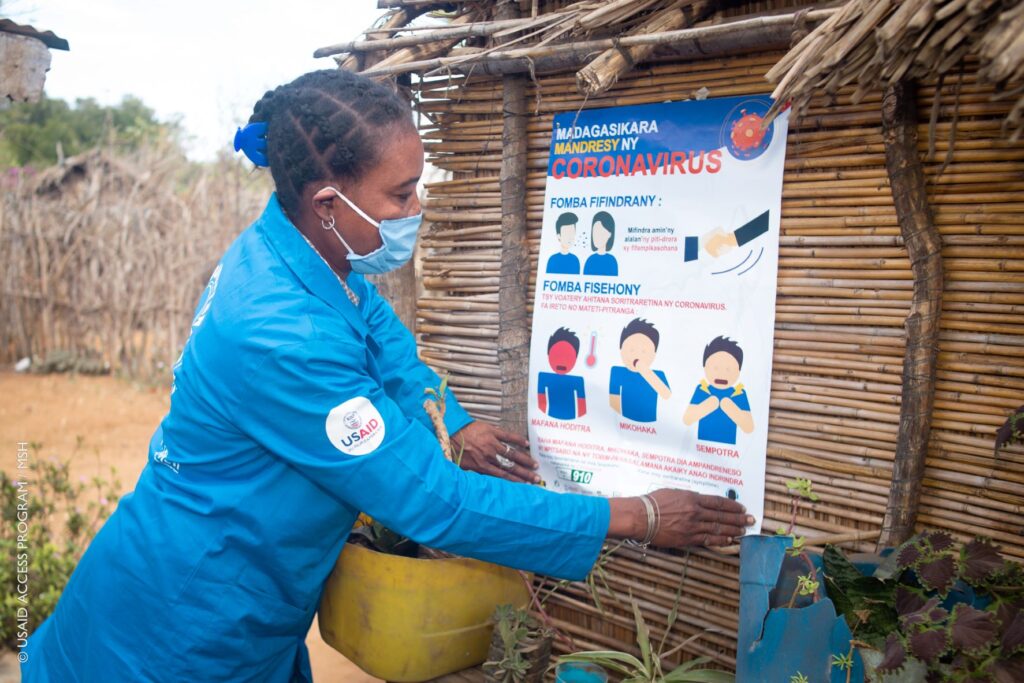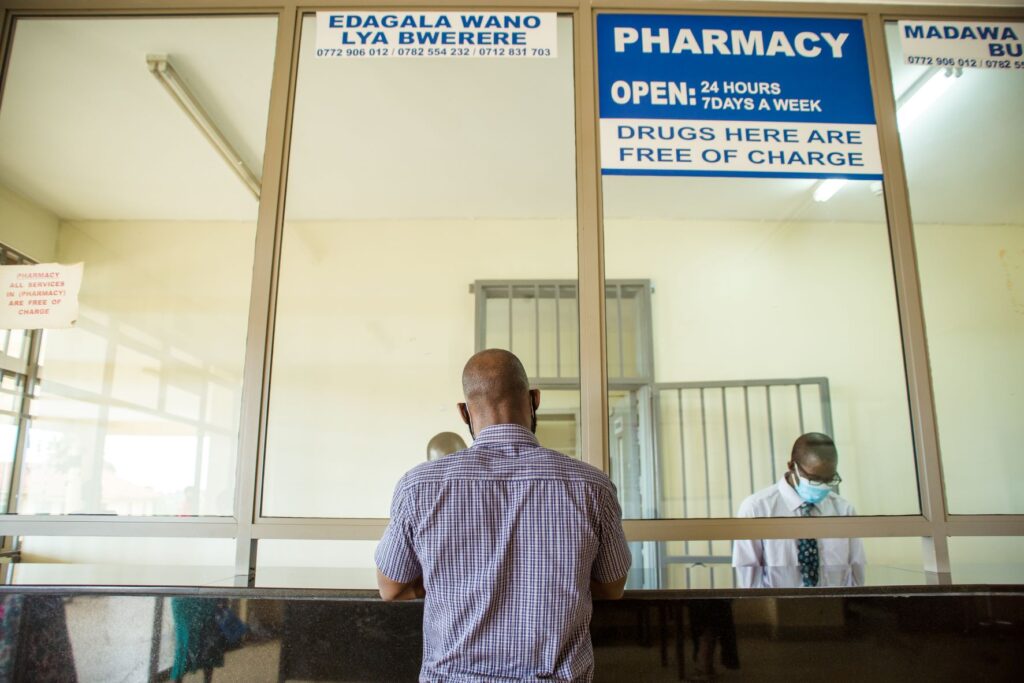Local Agency and a Culture of Readiness Drive MSH’s Position on Pandemic Preparedness and Response: Our Expert Explains
Local Agency and a Culture of Readiness Drive MSH’s Position on Pandemic Preparedness and Response: Our Expert Explains

How can we break the cycle of panic and neglect that has characterized the world’s response to recent epidemics? We can build a culture of readiness into every health system while equipping local leaders with the skills and authority they need to mobilize resources and act as soon as a crisis arises. MSH’s Senior Technical Director for Pandemic Preparedness and Response, Dr. Elke Konings, explains MSH’s approach.
What are the main components of MSH’s position on pandemic preparedness and response (PPR)?
The main components of our position are creating a culture of readiness from the community to the national level and promoting local agency so that leaders at the community, municipal, and district levels have the authority to take timely action in an emergency. To achieve this, PPR must be integrated into the entire health system.
Pandemic preparedness must become part of everyday life for everyone; it must become part of the cultural fabric and be enmeshed in every aspect of the health system. When communities can take swift action without bureaucratic delay—which is what we mean by having local agency—lives are saved, and the disease’s impacts are mitigated. Local agency requires effective local leaders who are capable, trusted by their communities, know how to mobilize resources, have action plans, and have the authority and legal mandate to act. In our position paper, we go into detail about how these two components can be achieved.
What led MSH to adopt this position?
We looked at how different country governments and localities managed their response to COVID-19. Specifically, we wanted to understand why some struggled to adequately respond and incurred higher death tolls, while others did better. The main difference, we found, was that the communities that fared better were more prepared, in large part because they had faced deadly epidemics within recent memory. Their leaders understood the threats of rapidly spreading diseases and had plans and systems in place to mitigate them when COVID-19 hit.

For instance, in 2017 Madagascar faced an epidemic of pneumonic plague. This is the most dangerous variety of plague because it spreads from person to person through cough droplets and is lethal if not treated with antibiotics within 24 hours of onset of symptoms. MSH partnered with local communities and health authorities to create community watch teams, which are groups of volunteers in each community who went door to door to educate their neighbors on how to protect themselves and their families. This local outreach also allowed them to identify people with symptoms and get them to nearby health facilities for testing and treatment. After the plague threat subsided, these trusted volunteers continued to work in their communities to promote primary health care initiatives, such as encouraging pregnant women to seek antenatal care. When COVID-19 emerged, these teams were rapidly mobilized and ready to educate their communities in COVID-19 prevention, detection, appropriate isolation or quarantine, and timely referral.
Madagascar is just one example. What we saw repeatedly in our research is that during the height of the pandemic, communities that were already active in supporting local primary health care efforts were able to mobilize more quickly to confront the threat. Preparedness was embedded in the way they responded.
How is MSH’s PPR approach unique?
Our position emphasizes the importance of creating a culture of readiness and local agency through integration of PPR into the whole health system rather than focusing on PPR as a disease-specific, or standalone priority. Our position also focuses on the local level, as that is where the first case of an epidemic or pandemic happens, where the first case of an outbreak is detected, and where spread is stopped or contained. That is not to say that global initiatives and commitments are not needed. What we say is that without a local culture of readiness and local agency, these global investments will not be enough to save as many lives as possible.
Since COVID-19 emerged in 2019, the world has made enormous progress in PPR practices. Not only have countries and global agencies updated their PPR plans, but there is unprecedented global will and leadership to commit additional resources to PPR, such as with the creation of the World Bank’s Pandemic Fund, or WHO’s Hub for Pandemic and Epidemic Intelligence. These and other initiatives will address important gaps and are critical, yet they might end up being deprioritized and forgotten when the worst of the pandemic is over and new priorities arise. At the global level, we are already seeing this kind of deprioritization, as other emergencies like the war in Ukraine or the economic recession grab global attention. If we don’t integrate PPR into our daily lives and the health system at large, we risk history repeating itself.
What are some challenges you foresee in adopting MSH’s recommendations?
We are really in a race against time. There will be more pandemics, perhaps worse than COVID-19, and they will happen more frequently, especially as climate change is accelerating. We must capitalize on the current political goodwill and the unprecedented public awareness and attention being paid to the importance of pandemic preparedness. We must seize this moment in time. We have a lot to build on. We have a lot of best practices and do’s and don’ts that we learned from the COVID-19 response. We must elevate PPR as an integral part of multihazard emergency preparedness, mainstream it in a culture of readiness, and weave it throughout the entire health system. We must not only make global investments—we must build the local capacities needed to respond; adopt enabling legal frameworks; update local and national PPR plans (committing to review them annually); and practice, practice, practice.
What is the single most important action governments, funders, and partners should take to improve their PPR?
Governments and funders are in some of the most important positions of leadership. By keeping PPR at the forefront of their agendas and making it a funded mandate for all parts of government and society, independent of political affiliation, today’s leaders can break the cycle of panic and neglect that too often characterizes their responses to public health crises. Funders can tie global and bilateral assistance for PPR to a requirement of creating a local culture of preparedness in countries and communities. And partners, particularly the private sector, can step up their engagement in PPR through direct coordination and collaboration with the public sector to, for example, maximize the availability of resources and increase the efficiency of their use. Fostering a culture of preparedness will not just improve local response to pandemics but will greatly improve prevention, early detection, and rapid containment of new outbreaks before they become pandemics.

Can you share another example of PPR integration across health system functions?
Take the example of Uganda—a country that has dealt with its share of infectious disease outbreaks, including HIV and most recently Ebola. Uganda’s public health supply chain is anchored on a robust electronic information system (known as the eLMIS) that provides real-time data on available stock of health supplies at facilities across the country. While this system was initially developed to facilitate the movement of HIV drugs, Uganda used it to improve the delivery of all essential medicines and health commodities. When COVID-19 hit, local authorities relied on this system to help mount a coordinated and effective local response that ensured adequate amounts of gloves, masks, and other personal protective equipment and a steady supply of essential health commodities wherever they were needed. A culture of readiness, coupled with the use of an integrated information management system, facilitated coordination and information management and provided real-time data for planning, decision making, and the rational distribution of commodities for response. It is this same system that helped the country contain an outbreak of Ebola again just this month.